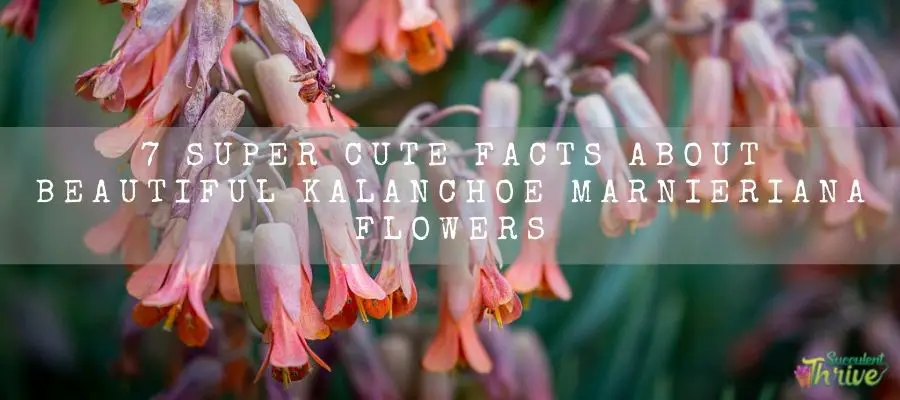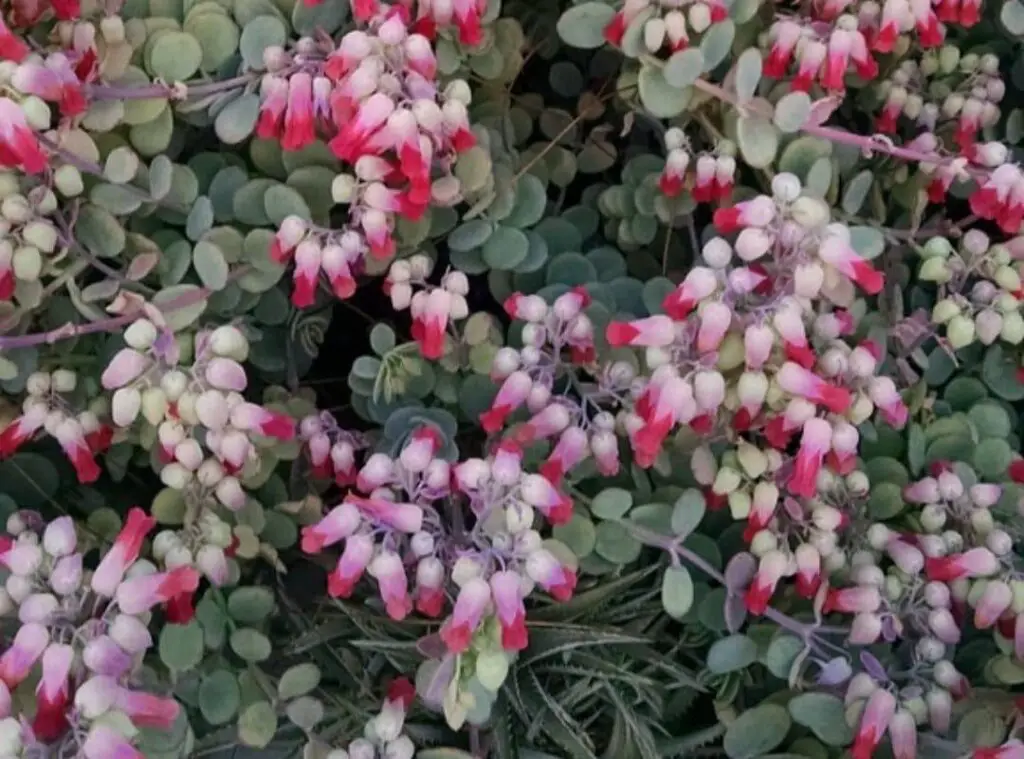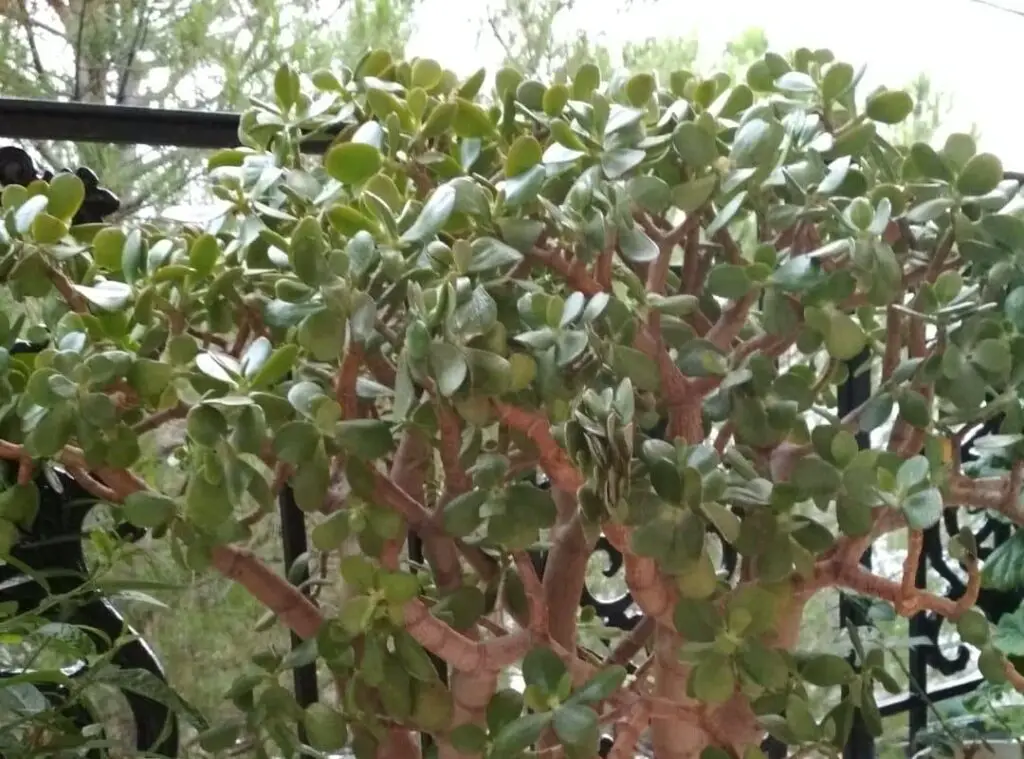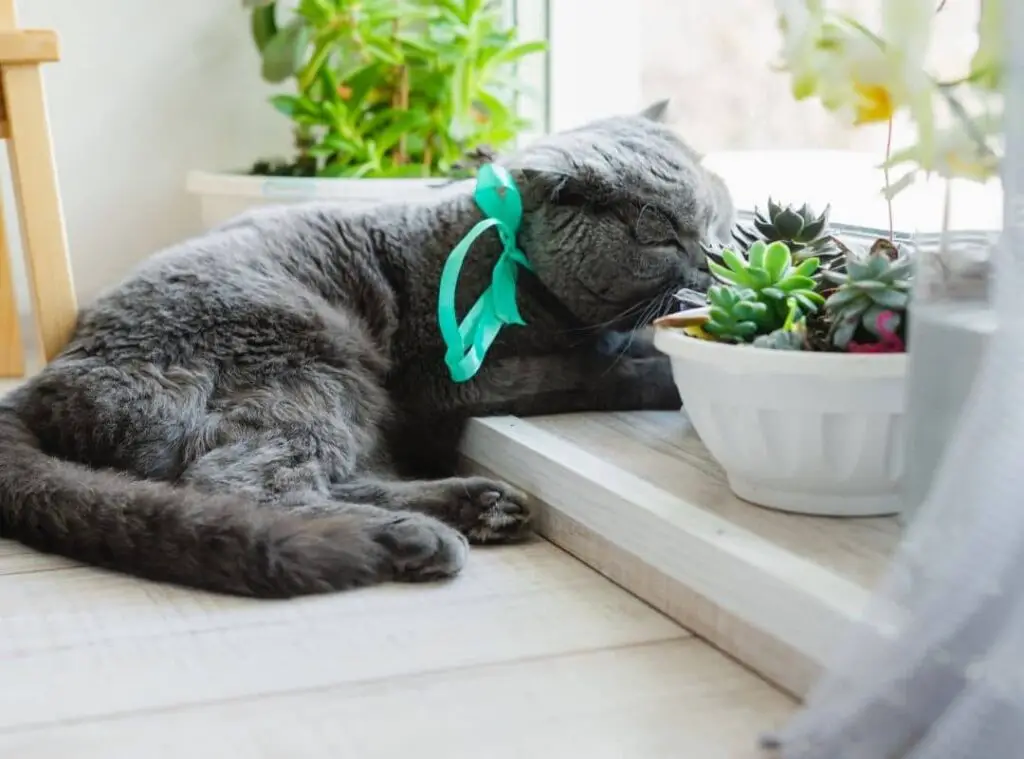We can see Kalanchoe marnieriana flowers throughout the year when they are grown in their native habitats. If you have grown them as a houseplant, you may see them blooming during later winter to late spring.
Kalanchoe marnieriana is an easy maintaining plant which you could grow as an indoor succulent. You could spot them growing outdoors as well, especially if you live in USDA zone 10 or 11.

Many people tend to grow this plant as an indoor plant due to their attractive flowering formation. This is originating from northeast Madagascar.
They belong to the family Crassulaceae. Kalanchoe marnieriana leaves are thick and they could also retain water and it is a special feature of these plants.
In General, they would rise to 12 inches and with a wide spread of 12 inches too. This is an evergreen subshrub type succulent. They consist of leaves which are blue-green and round In shape. The leaf formation on this Plant mimics clam shells.
Appearance of the kalanchoe marnieriana flowers
Generally, Kalanchoe Marnieriana would come up with red flowers. Further those blooms are bell shaped. You may describe the appearance of the Kalanchoe marnieriana blooms as dangled, coral type and larger in size too.
Moreover, you could spot the Kalanchoe marnieriana flowers produced through their flower stalks. Those stalks are visible on the branch’s edges.
How long it will take to kalanchoe marnieriana flowers
You could spot the Kalanchoe marnieriana blooming during the later part of winter and at the start of the spring.
Usually, the reason for this is that Kalanchoe marnieriana prefers to have 13 hours of darkness daily when they bloom (and we could call it short days).
How long do kalanchoe marnieriana flowers last?
You could expect the Kalanchoe Marnieriana flowers to last for several weeks in general. However, chances are that you could spot them remaining even for several months.

Which time of the year are the kalanchoe marnieriana flowers?
When the kalanchoses are in their natural habitat, you could expect them to bloom right throughout the year.
On the other hand, if you consider growing them indoors in a container or in a pot, chances are that you could spot them booming in late winter to late spring as they are a summer dormant plants.
However, once they get exposed to an increased amount of light, there is a potential of slowing down the flowering.
Once this happens and if you want them to bloom again, you need to provide them a resting period. This is called the hibernation period.
It is essential to have a flowering process as then they have energy to produce Kalanchoe marnieriana flowers once they get healthy conditions for flowering.
When you keep the plant in no light condition, it will make them awake from those winter conditions and those conditions will make them bloom. You will not be able to rebloom the kalanchoe plants if you do not provide them a rest period.
On the other hand If you expose them to low light conditions during fall and in winter, it will stimulate the flowering process.
If we consider Kalanchoe plants in a nursery, most of the time, you could notice that they are forced to bloom. Any buyer would love to have them when they are in their full blossom.
How do you take care of a kalanchoe flower?
When they are in their full blossom, you need to continue the regular care treatment for the plant. Provide them with proper lighting conditions.
Ideally the flower should be located in a place where it gets plenty of sunlight.
If you have grown them in a container, you could use a cactus soil mix which could amend the soil and make it healthy for the Kalanchoe marnieriana flowers. Keep watering them once you spot the soil condition is too dry. You could feed them appropriately too.
On the other hand, if you spot your plant is deteriorating, you need to trim the dead Kalanchoe marnieriana flowers and remove the spent blooms.
Once you do this, it would be helpful for the plant to conserve its energy as it does not have to spend any energy to sustain a dying part of the plant.

How to protect Kalanchoe marnieriana flowers from;
Pests
You need to protect your kalanchoe plant from pests such as Aphids, mealybugs, and other insects.
You could identify the aphids by looking at the appearance of those little creatures. They are little crawlers which you could spot in green.
On the other hand, you could spot the mealybugs as white cottony substances who tend to jump once they are interrupted. Moreover, you could spot scales under protective armored shells. They are very small; it is very hard to spot them at once.
To treat the aphids, you could spray water at them or apply water while using a garden hose. You could use an alcohol saturated cotton to get rid of mealybugs. Furthermore, to remove scales, you could use a plastic bank card and scrape them smoothly without causing any harm to the plants.
Cats
Kalanchoes could be toxic towards cats if they consume the plant. It is toxic to the level that even a small part of the plant could make a harmful impact on the cats. They consist of cardiac glycosides or cardiotoxins which could cause cardiac problems.
The kalanchoe flowers could be even more dangerous once your cats ingest them. They have a large amount of the toxins contained in the flowers. You could protect the kalanchoe plants and the cat by following the steps below.
- You need to make sure that you locate the plant somewhere the cats cannot reach the plants.
- You may spray repellant sprays on your plant. It is entirely safer for the plant and for the pets as well. It will deter your pets from snacking on the succulents.
- Supply alternate greenery for the pets to chew. Pet grass would be very handy here and it will keep the pets occupied.
- Stay with the pets as much as you can and try to engage with them whenever possible. Consequently, they will not have any time to reach those plants.
- Barricading your succulents whilst utilizing stuff such as bird cages, terrariums. Locate the succulents in higher places such as tables, shelves, this could be a great trick to protect them from cats.
- Alternatively, you could place some orange or lemon peels in the container and the fragrances coming out from those would keep the cats away from the plants.
Children
These are non toxic toward humans. However, you could locate the plants on a shelf or on tables so that the plant will not be accessible for the kids. Try to educate your kids to not approach these plants.

Can we artificially stimulate the flowering?
If you wish to artificially stimulate the Kalanchoe marnieriana flowers, you need to follow some instructions in advance
What you have to do is, you need to reduce watering and let them be in a dark period for about 14 hours daily. You need to do this at least 6 weeks before the blooming time you wish to have.
You could place the plant in a closet or even under a box for about 14 hours. Furthermore, you could provide bright sunlight for another 10 hours daily. Make sure that you keep the plant in warm conditions too.
Avoid watering and applying fertilizers for the plant during this period. That is because they would be dormant during this period.
Once you spot the Kalanchoe marnieriana flowers buds forming, you need to shift the plant to a bright sunny place. Moreover, make sure that you remove the spent flowers as that will stimulate the new buds.
Chances are that you could spot them blooming for several months.
Read Next: Why Kalanchoe marnieriana leaves fall off? | 9 Useful Facts |
